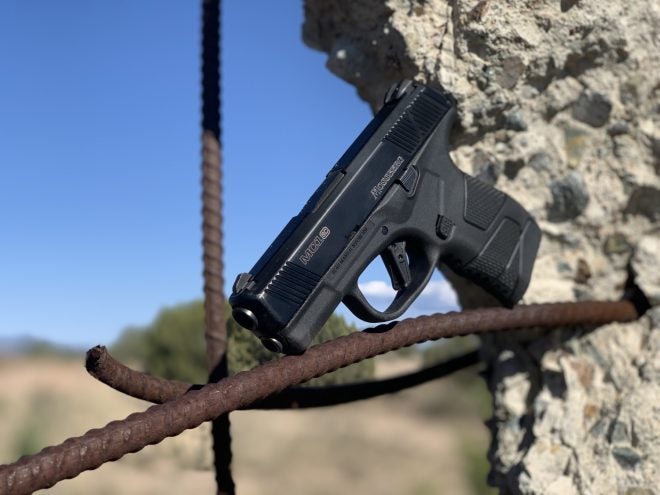Pop quiz: What was the first firearm that Mossberg manufactured? If you guessed a pistol, you have some bragging rights in the comments section. (If you said a shotgun, you clearly miss obvious clues…)
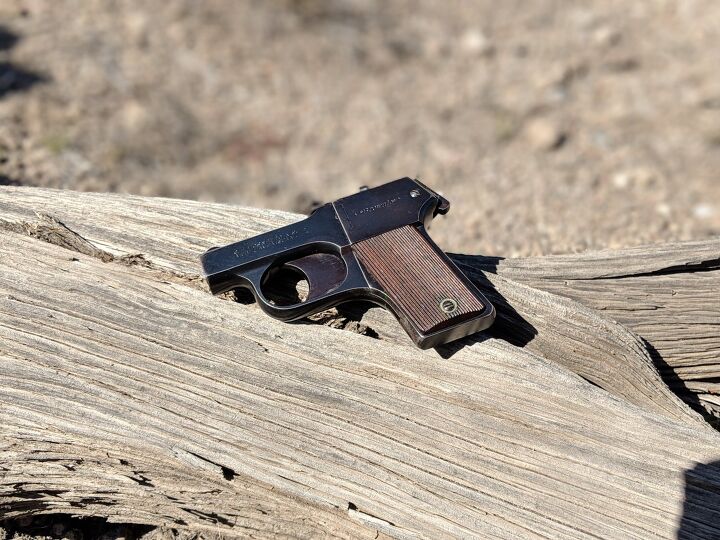
Mossberg Brownie. A dandy little gun.
Mossberg got their start with the “Brownie”, a four-shot pistol marketed to trappers for dispatching game. It was “dandy” according to some early marketing efforts (take heed current gun companies, you need to step up your game).
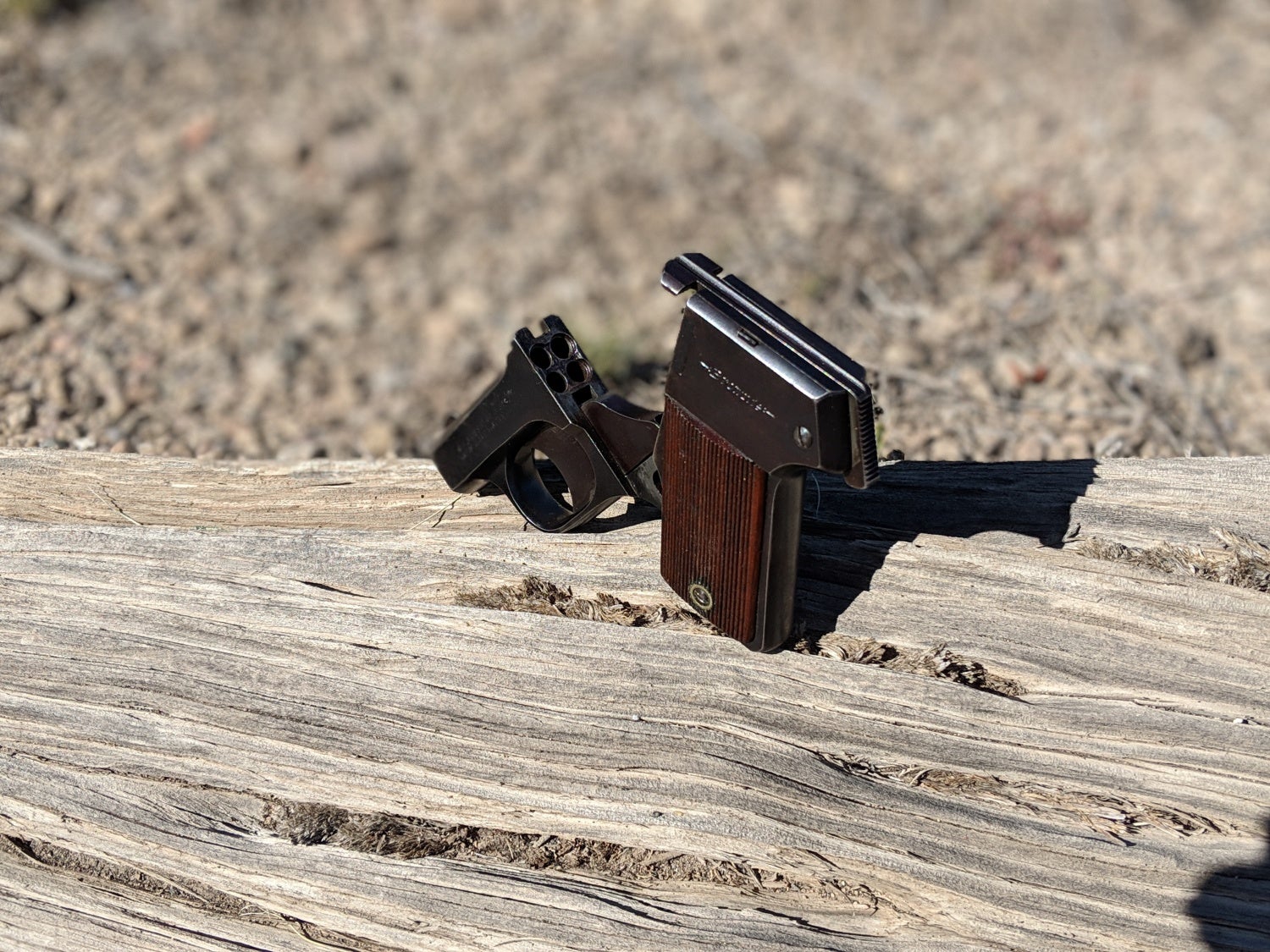
The Brownie was a pepperbox .22LR pistol for dispatching varmints.
This little .22LR pepperbox style pistol was fairly popular, selling around thirty-seven thousand units in the twelve years the pistol was manufactured and distributed (1920 to 1932). It retailed for a stout $5 dollars (which would correct to about $60 today).
For their hundredth anniversary, Mossberg is getting back to their roots. They invited a number of media outfits to Gunsite Academy to be part of their product release.
![[Enter Stage Right]: Mossberg MC1sc. Better for dispatching more than just varmints.](https://www.thefirearmblog.com/blog/wp-content/uploads/2018/12/DraggedImage-2-1.jpeg)
[Enter Stage Right]: Mossberg MC1sc. Better for dispatching more than just varmints.
Background
With three years of development and four new patents. Mossberg is coming to market with the MC1sc (Mossberg Carry, Model 1, ). 9mm subcompact pistol
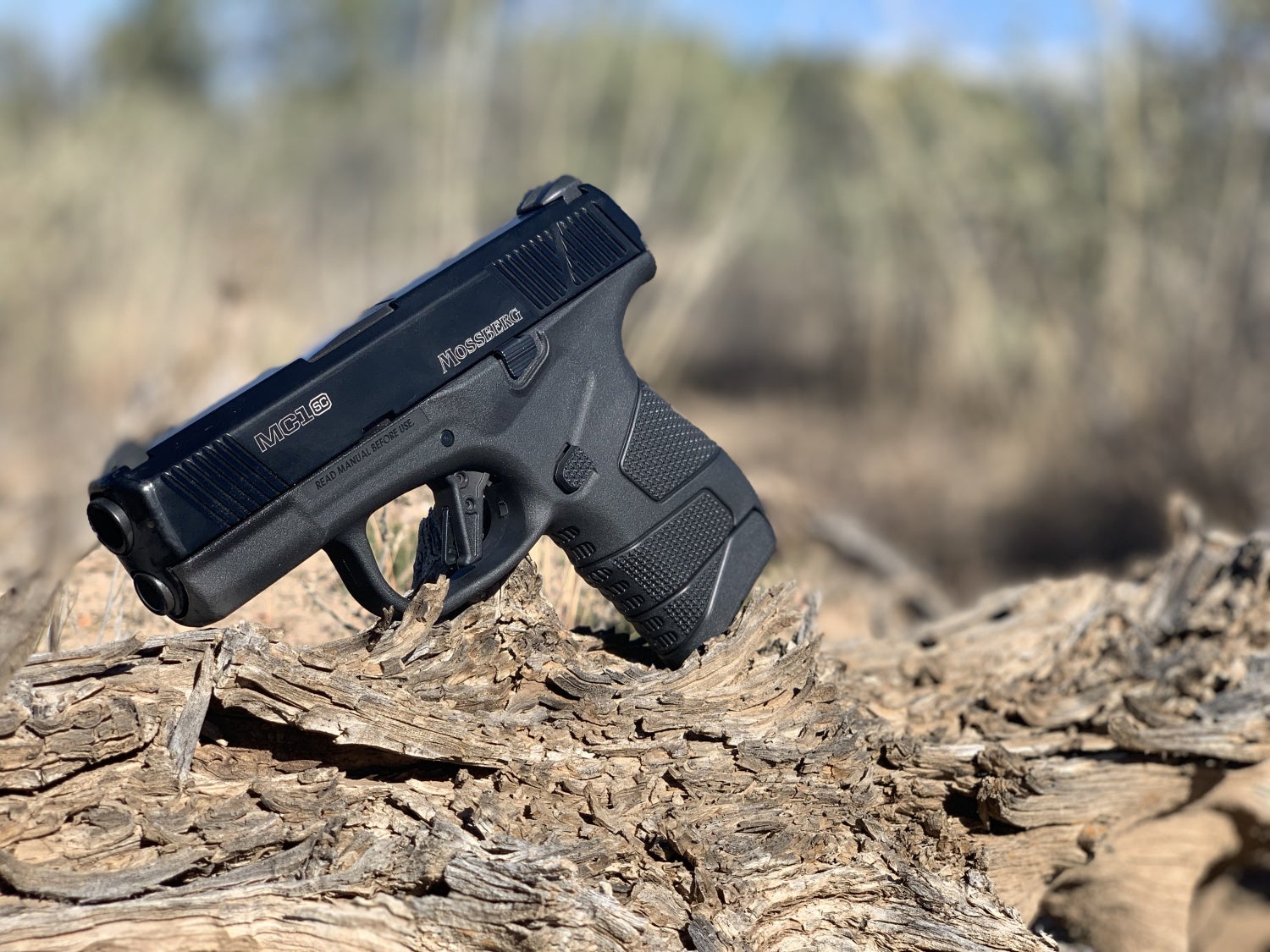
It is manufactured in their US facility in Eagle Pass, TX.
Interestingly, Mossberg holds many patents (over one hundred utility and design patents) including such things as: Cable Locks (and they were the first manufacturer to include one), Bullpup Shotguns, Cantilever Scope Mounts, Dual comb stocks, and using AR-15 Magazine in bolt rifles.
Mossberg did a healthy amount of market research before even beginning the project. They found that for a subcompact pistol, most people want:
- Chambered in 9mm
- 2.75-3.50 inch barrel
- Single Stack (6 rounds)
- Polymer Construction
- Price Point: <$450
Construction of the Mossberg MC1
There are five models:
- Standard Model
- Cross-Bolt Safety
- Truglo Tritium Pro Night Sights
- Viridian E-Series Red Laser
- Centennial Limited Edition
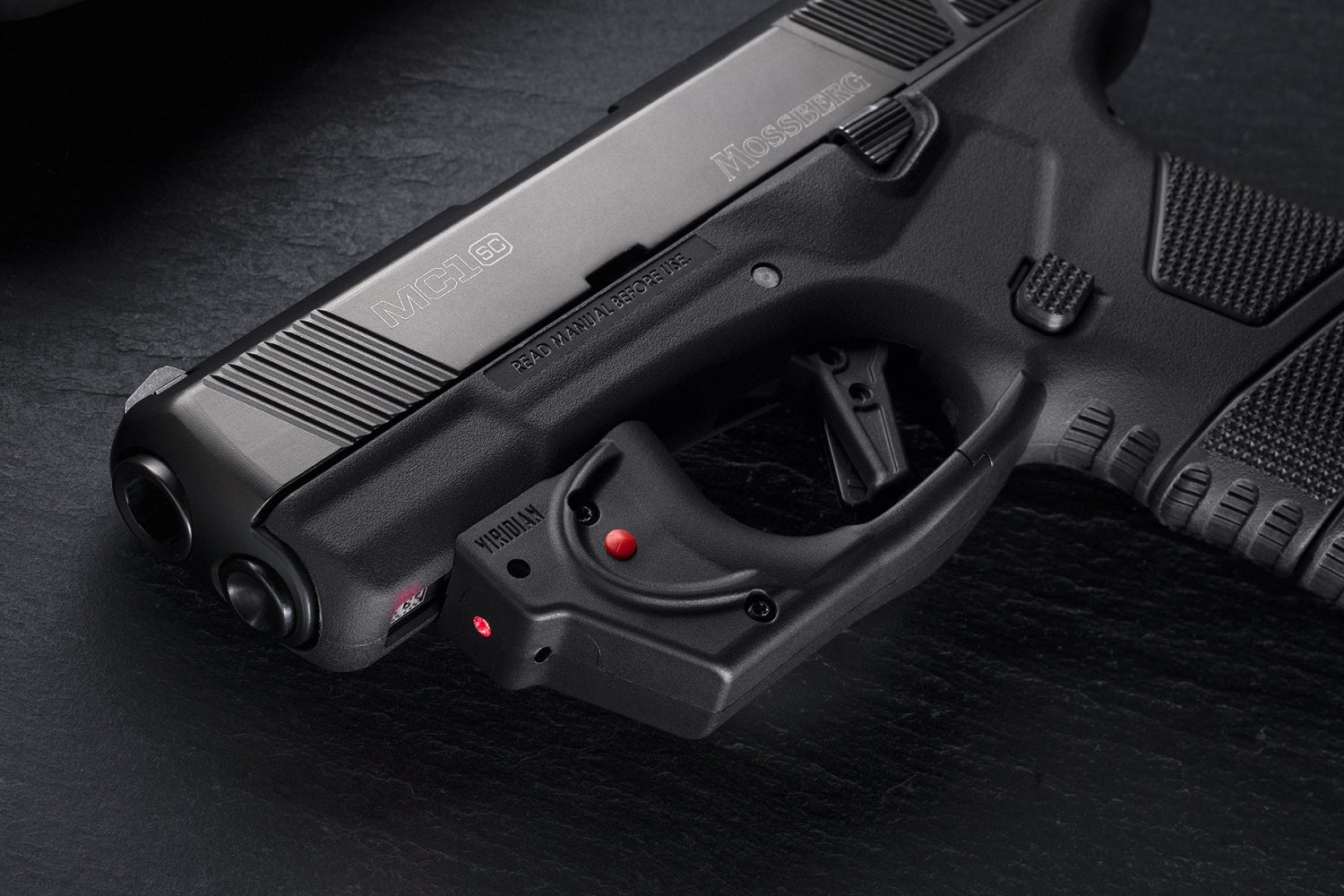
Model with the integrated Viridian laser. We didn’t get hands on this model at the event.
The ergonomics are similar to that of a 1911 with respect to grip angle. It has an oversized trigger guard. You can also reverse the magazine release.
Technical Specifications:
They all share the same dimensions (excepting weight which will vary by an ounce or so if you add the laser):
- Length: 6.25 inches
- Height: 4.30 inches
- Width: 1.03 inches
- Weight: 19 ounces dry
- Capacity: 6+1/7+1
- Rating: +P
- Slide: 416 Stainless Steel, Fore and Aft Serrations
- Barrel: 3.40 inches, 416 Stainless Steel, DLC, 1:16 RH Twist, Six Grooved Button Rifling
- Sights: Front Dot, Rear Two Dot, Drift Adjustable Dovetail
- Sight Radius: 5.4 inches
- Trigger: Flat Profile with 0.5 inches of Travel at 6 pounds
- Safety: Integrated Trigger Blade Safety (standard), Cross-Bolt (optional)
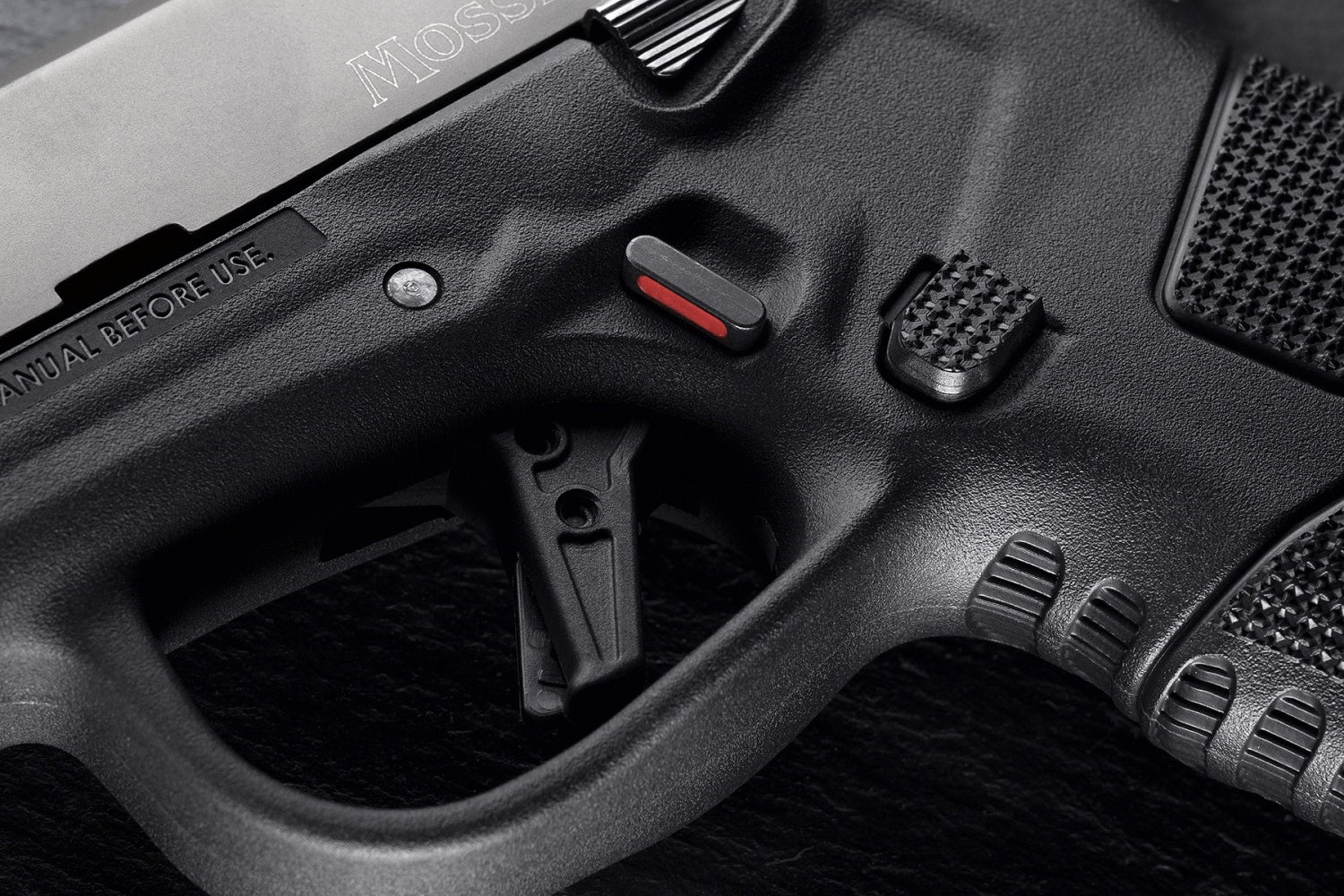
Model with the block safety.
Magazines
At first glance, the magazines appear to be ETS Clear mags. However, these are another custom creation from Mossberg, trademarked as their Clear-Count Clear Polymer magazines. More on these later.
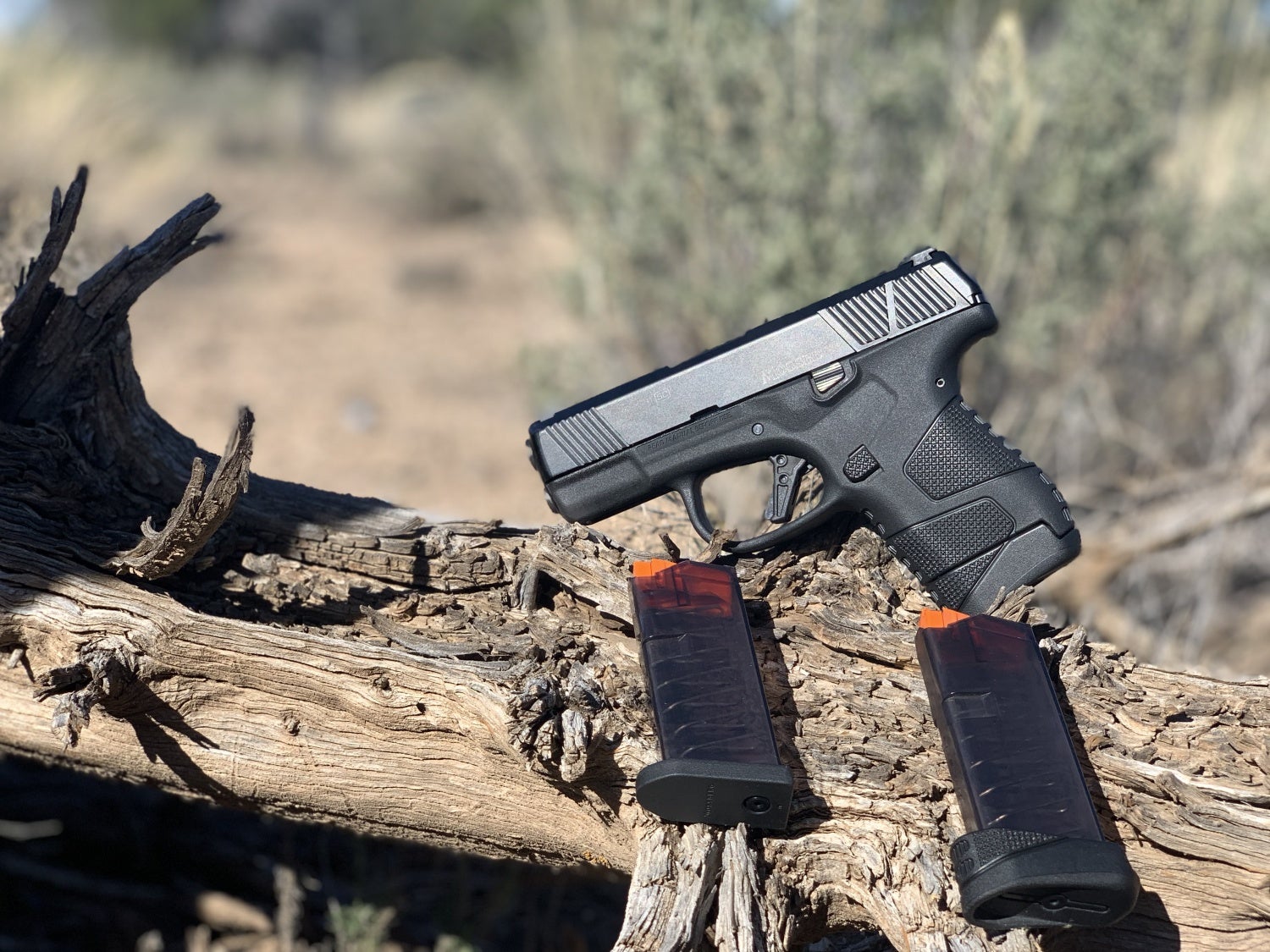
Mossberg MC1sc with both 6 round (flush) and 7 round (extended) magazines.
First Impressions and Observations
First thing in the morning was the classroom session and product presentation. After the initial introductions and mandatory PowerPoint, we were all given a box, a Kydex holster, and a magazine pouch.
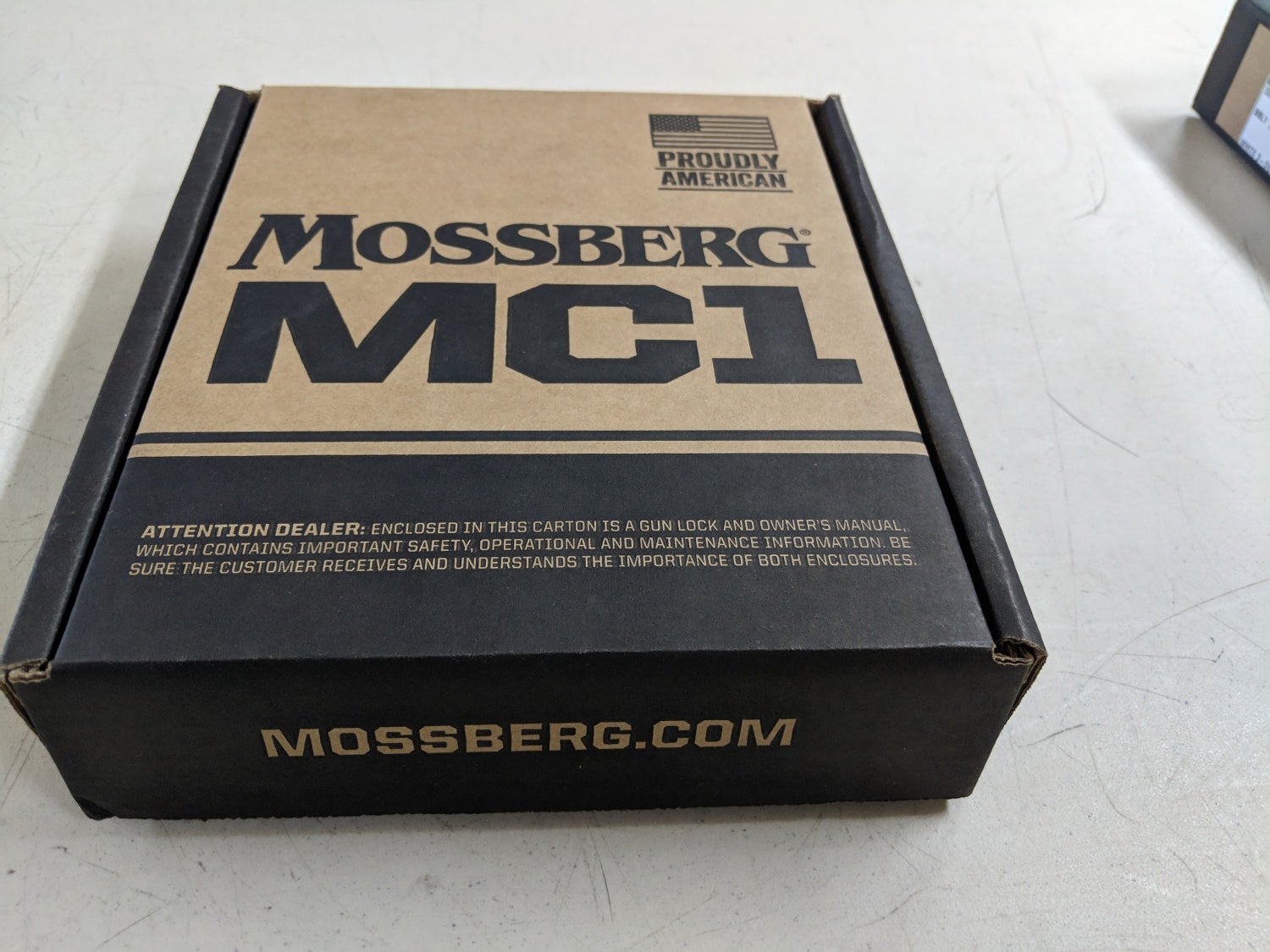
Simple plain packaging.
Opening up the pistol, it is clear there is some Glock DNA. Which is not a bad thing. It means aftermarket components are going to be fairly well tested and available.
One part of the Glock DNA that did not make it into the design is the horrible way to takedown the gun for cleaning. Disassembling a Glock has resulted in a few negligent discharges (not this author) due to the need to pull the trigger. Mossberg resolved this by making you actually remove the firing pin as part of the takedown with their patent-pending Safe Takedown System (STS).
Basically, you drop the magazine and lock the slide back. Then you remove the rear plate (pinching the rear plate makes it easier) and extract the firing pin assembly out the rear. Then you pull the slide assembly forward and off the front. We found if you don’t keep the slide angled down it wants to kick out the recoil spring.
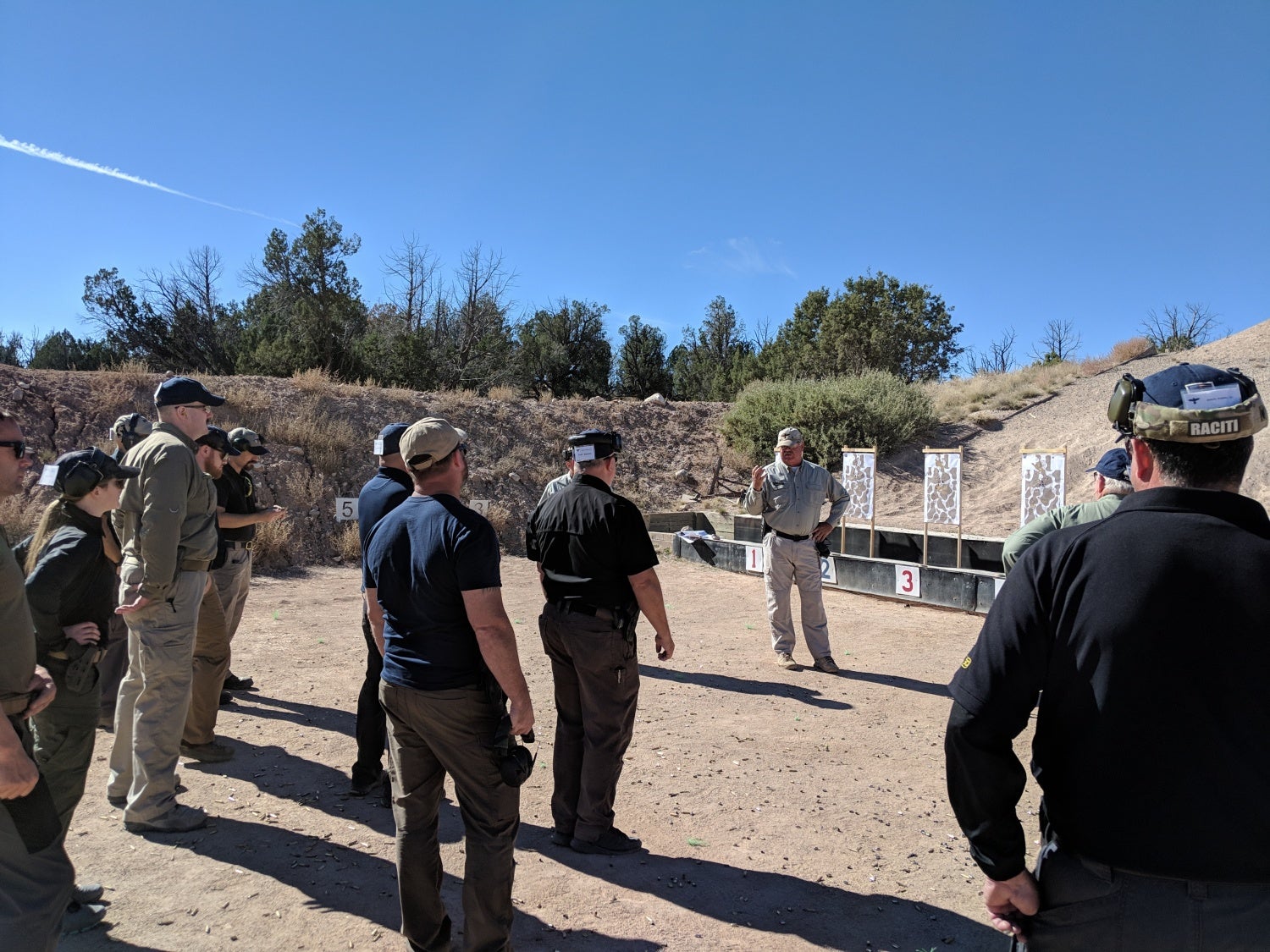
Mario running our brief for the next drill.
The rest of the week was going to be running a modified Gunsite “250” class using the MC1. Our instructors for the week were Il Ling, Paul Kultala, and Mario Marchman.
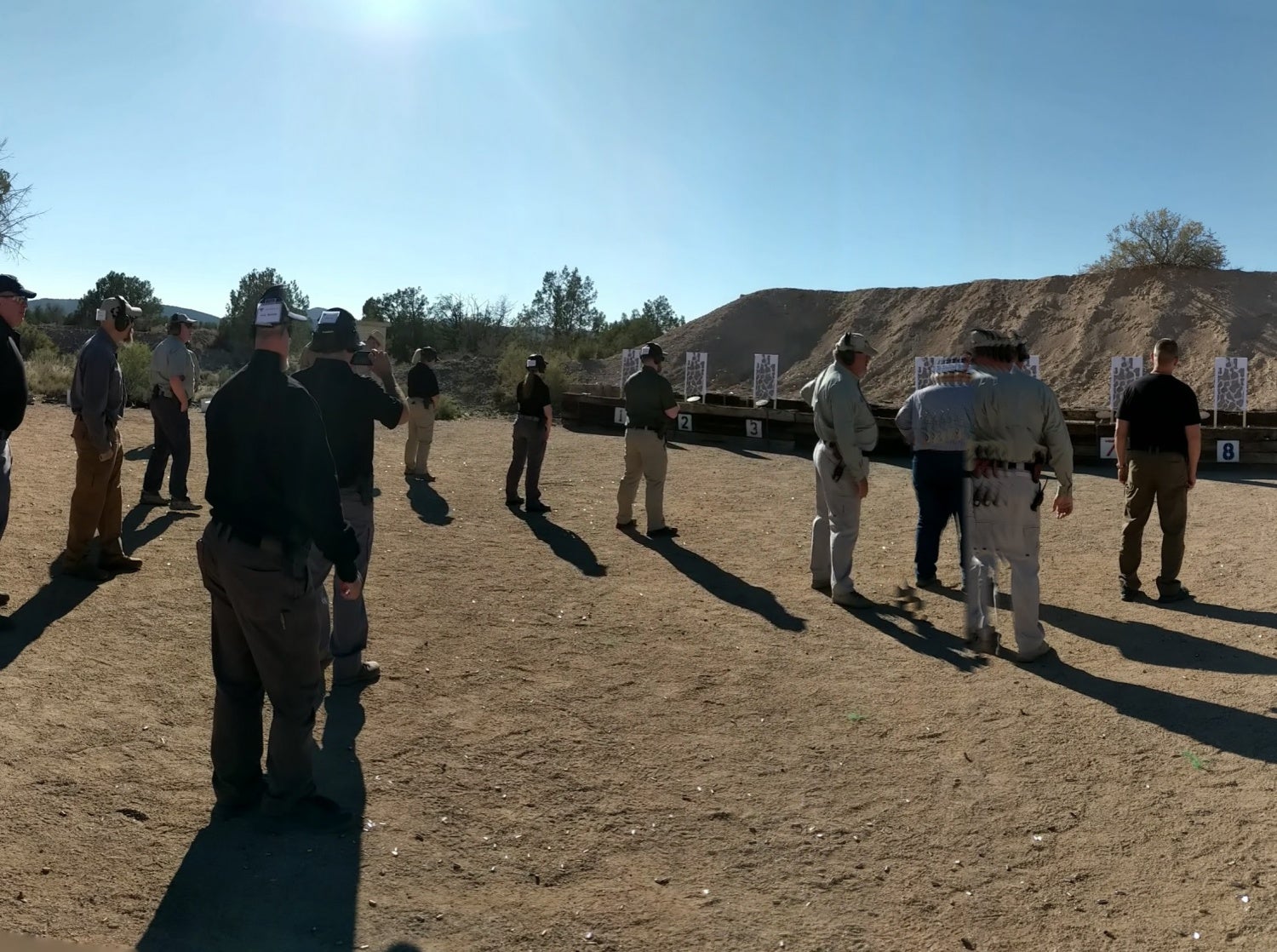
We ran two squads of eight during the shooting sessions.
Out on the range, we started off the morning with some familiarization drills. Single shot drills from 3 yards out to 15. Then progressed to hammer pairs and failure drills. Ending with mag dumps. We ran shoot houses, did competitions, long distance shots, and snuck through arroyos, engaging targets. Collectively we ran a few thousand rounds over three long days of shooting. We ran a mixture of ball ammo and Hornady Critical Defense.
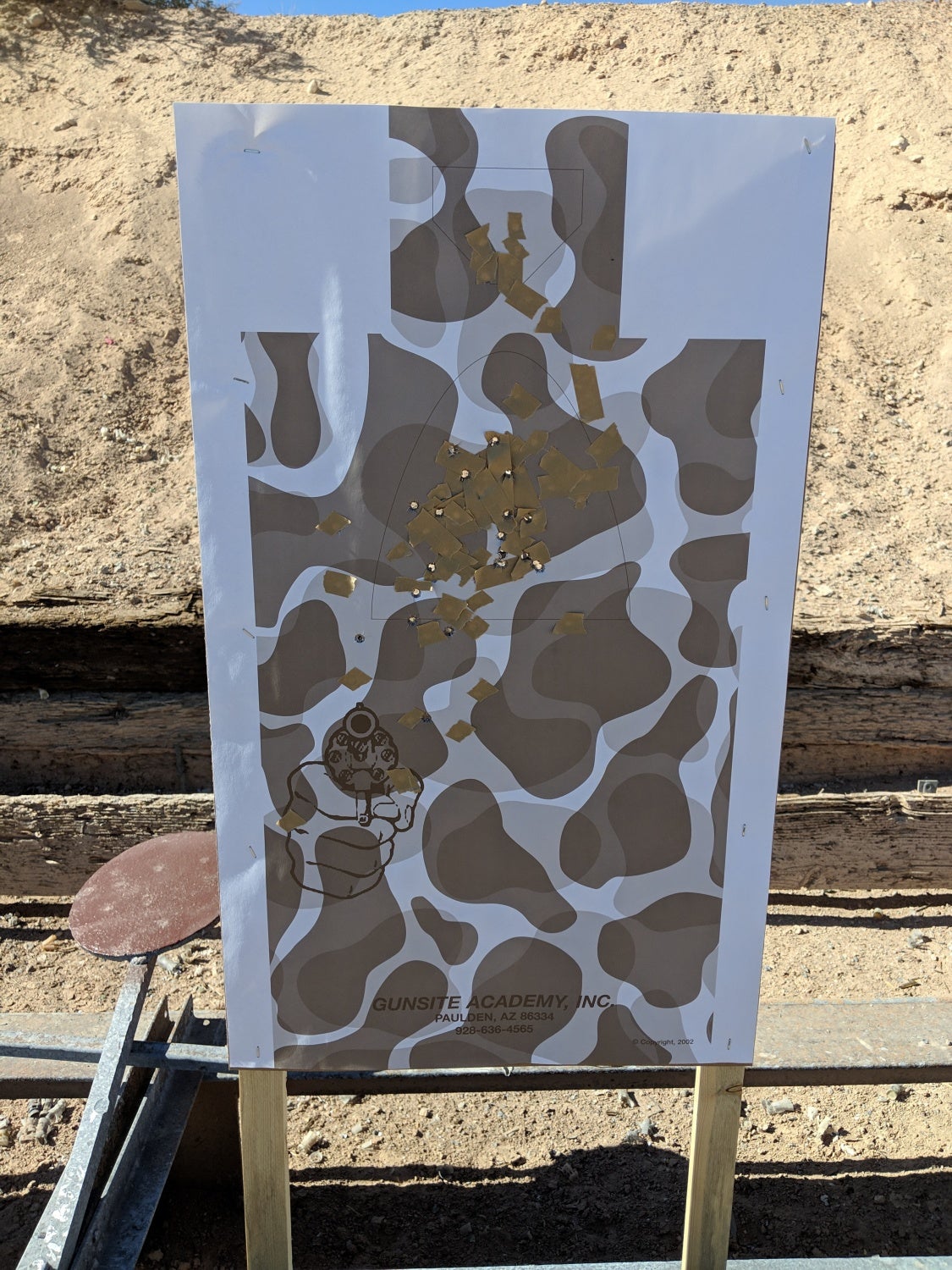
One of the many targets we engaged over the 3 days.
We were graced with the presence of the top two shooters of Top Shot Season One, Iain Harrison (also of Recoil) and Chris Cerino. Besides being the week’s comic relief, both, as you can imagine, are skilled shooters (still), and Chris wanted to push the pistols to distance. We started at the 35-yard line and within a couple of shots, all of us were hitting six-inch steel plates (shaped like the head area of the paper targets). Chris then wanted to play at 50 yards, so we all moved back. I was able to hit steel on my third shot (we were all close on the first few shots). Then Chris showed us all up by hitting his first five shots in a row. With a 3.4-inch barrel. In a subcompact. At 50 yards. That is pretty good.
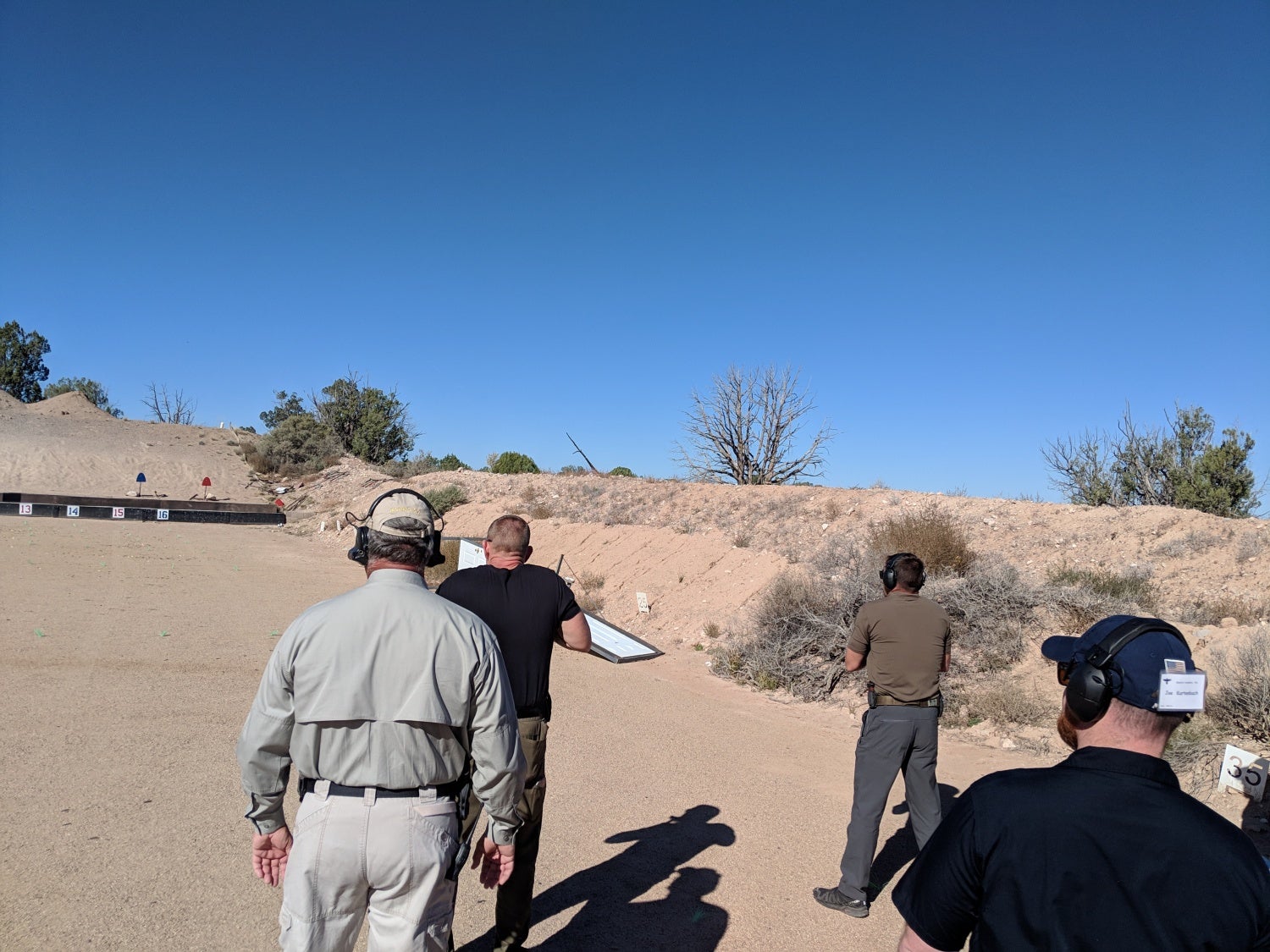
Chris Cerino and Iain Harrison reliving their glory days at Top Shot by showing off during the 35-yard shot.
The pistols all performed really well during the course. I never cleaned or lubed mine, and I didn’t have any malfunctions. The MC1 ate both the ball and hollow point just fine (granted it was only two brands of ammo).
I found the rear serrations to be exceptionally aggressive. Doing a morning of press checks after every string left the knuckle of my middle finger a little irritated.
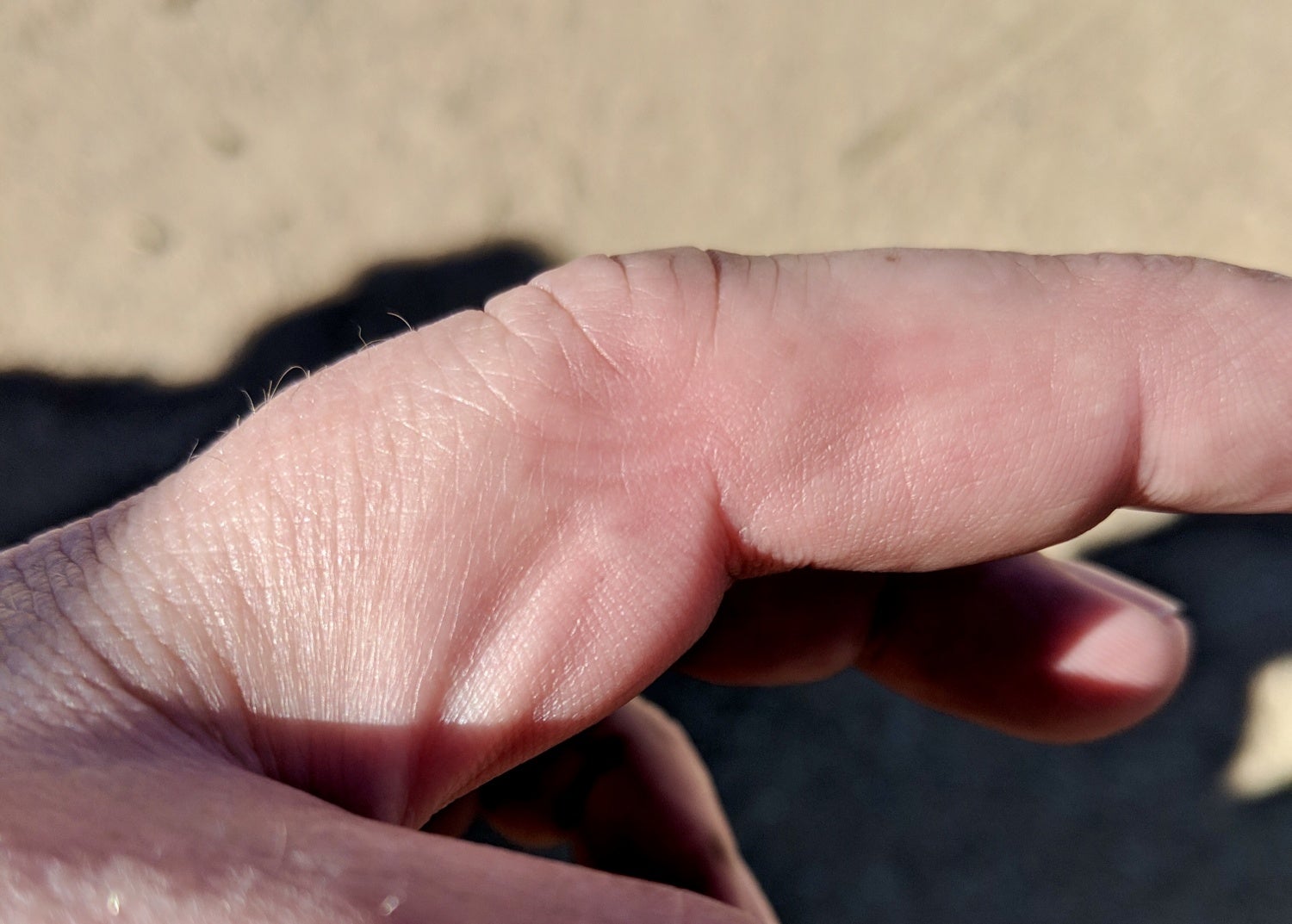
Rear serrations are aggressive enough to provide an imprint after the first morning of the shooting. This is likely due more to my soft computer desk job than the machining.
One thing that was very obvious during press checks is when the gun was out (I had a few instances when my thumb dropped the slide on an empty mag (hey, it happens). The bright orange follower in the magazine was a stark visual that the gun was dry.
Speaking of the magazines, many initial reactions were more of a “WTF, why would you start with clear mags?”. If you have any experience with other clear magazines, you know that they tend to not be the best. Mossberg took some time to explain that they had actually engineered their magazines (these are not an off the shelf, white label). They talked about some of the design and material science that went into them—but honestly I kind of glazed over a bit. The take away is that the magazines are high-quality and exceptionally durable.
During the course, a few of the magazines were loaded to capacity and launched as high as possible into the air. I’m not saying it was a competition or anything, but I’m pretty sure some of the magazines made it at least four stories up before coming down. The worst thing that happened was one of the rounds kicked out. No breakages or appreciable damage and the magazines continued to run for the remainder of the course. If you cannot get past the clear magazines, though, no worries, you can just buy Glock 43 magazines. Yep, Mossberg’s engineers designed the gun to be compatible.
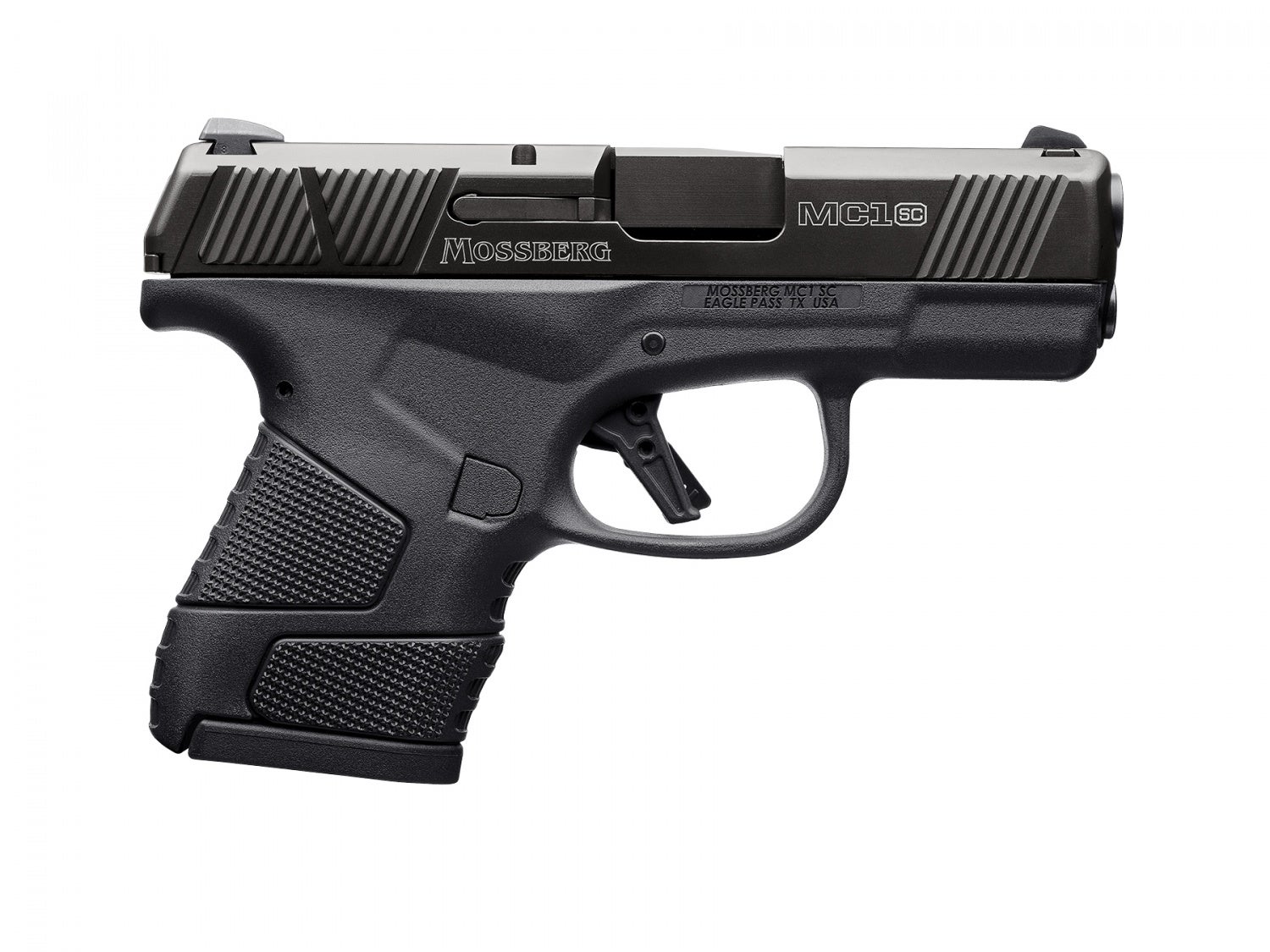
Flush fit magazine.
The models we were issued for the course all had “three dot” sights. Most of us ended up blacking out the two rear sights with a sharpie. The rear notch was good but the dots were so bright that it made it a little more challenging to pick up the front sight. On some of the speed drills we ran, it was distracting enough to warrant the field modification.
Another point of note about the sights is that they are actually SIG #8 sized. Another feather in the cap of the engineers at Mossberg. There are plenty of aftermarket sights you can add.

The oversized trigger guard is nice. It would be awesome to have a little higher cut at the back.
Another point that would have made the pistols just a hair better would have been a larger undercut at the back of the trigger guard. That is getting a little nit-picky though.
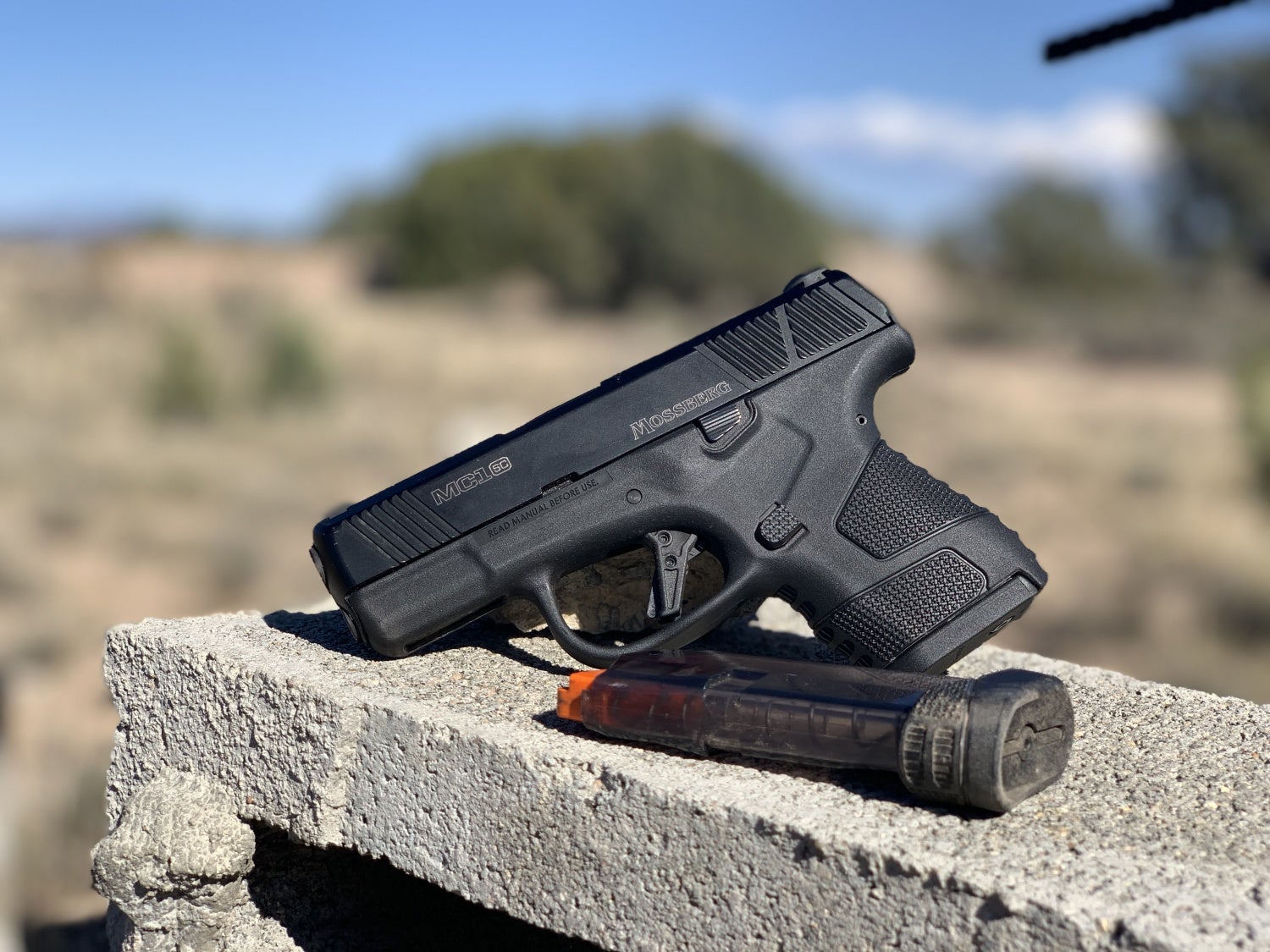
I know it is there for legal reasons, but having “Read Manual Before Use” imprinted in the polymer is right up there with “GripZone”…
Mossberg listened to our feedback, though it is unclear how much of the feedback will be able to make it into the first run of product—I’m sure production cycles were pretty set by the time we got our hands on them.
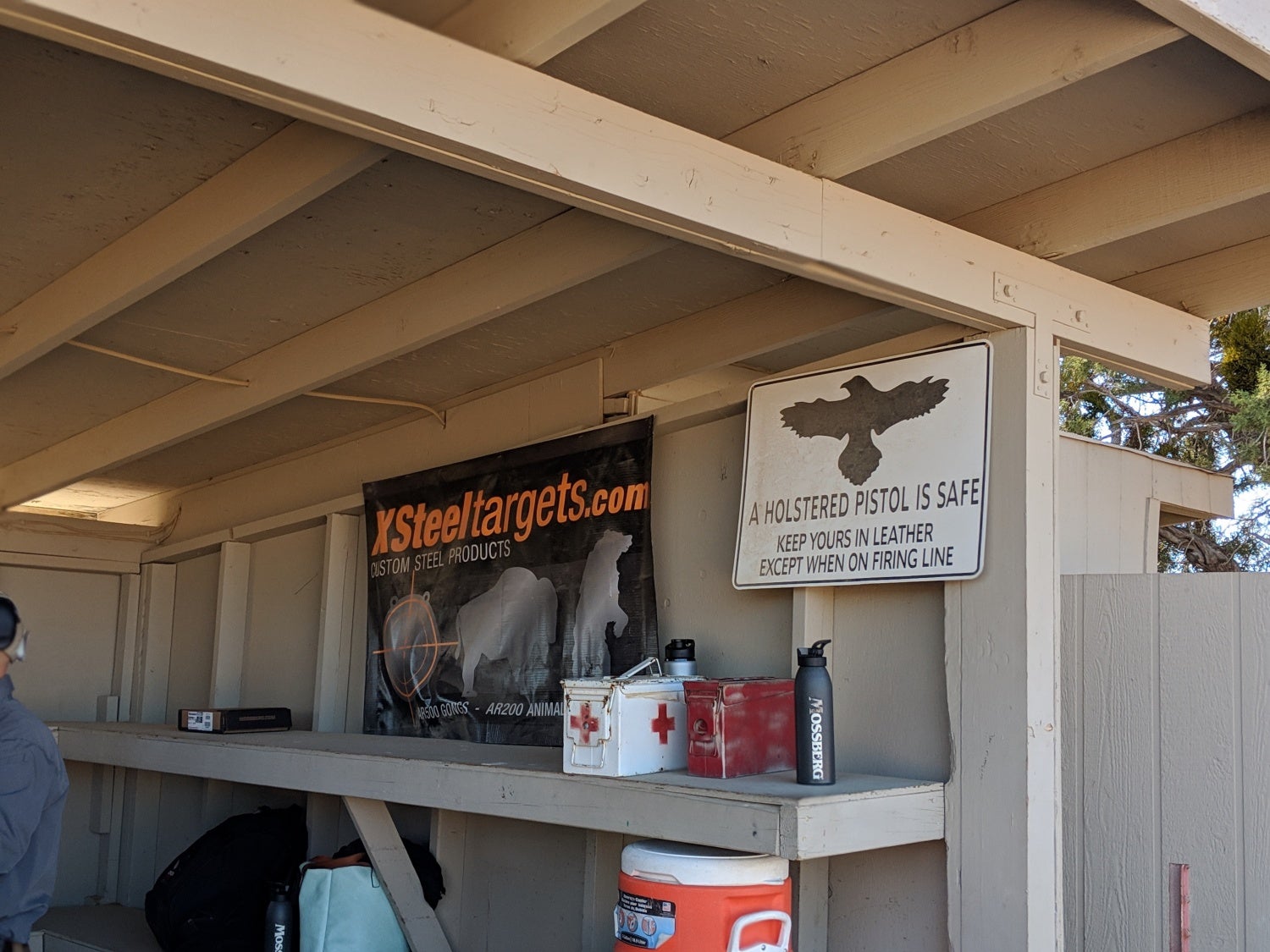
Gunsite is a “hot range”. It’s nice to be treated like an adult occasionally. We had zero safety violations.
I did receive an MC1 prior to this article publishing so could run it on my own. I compared it to my Glock 43 and my M&P Shield and subjectively I find the MC1 to be less snappy than either Glock or the Shield. That is super hard to qualify though—they are all tiny little guns—I wouldn’t run a competition with any of them.
They are little more expensive than an M&P Shield but less than a Glock 43 (MSRPs). The Mossberg MC1 has an MSRP of: $425 (base), $526 (tritium), $514 (laser).
Finis
My experiences with the Mossberg MC1 were certainly positive. Enough so that I am adding a couple to my collection—as soon as my FFL gets them in stock. The “negatives” I found were more personal preferences than anything (and softening of callouses).
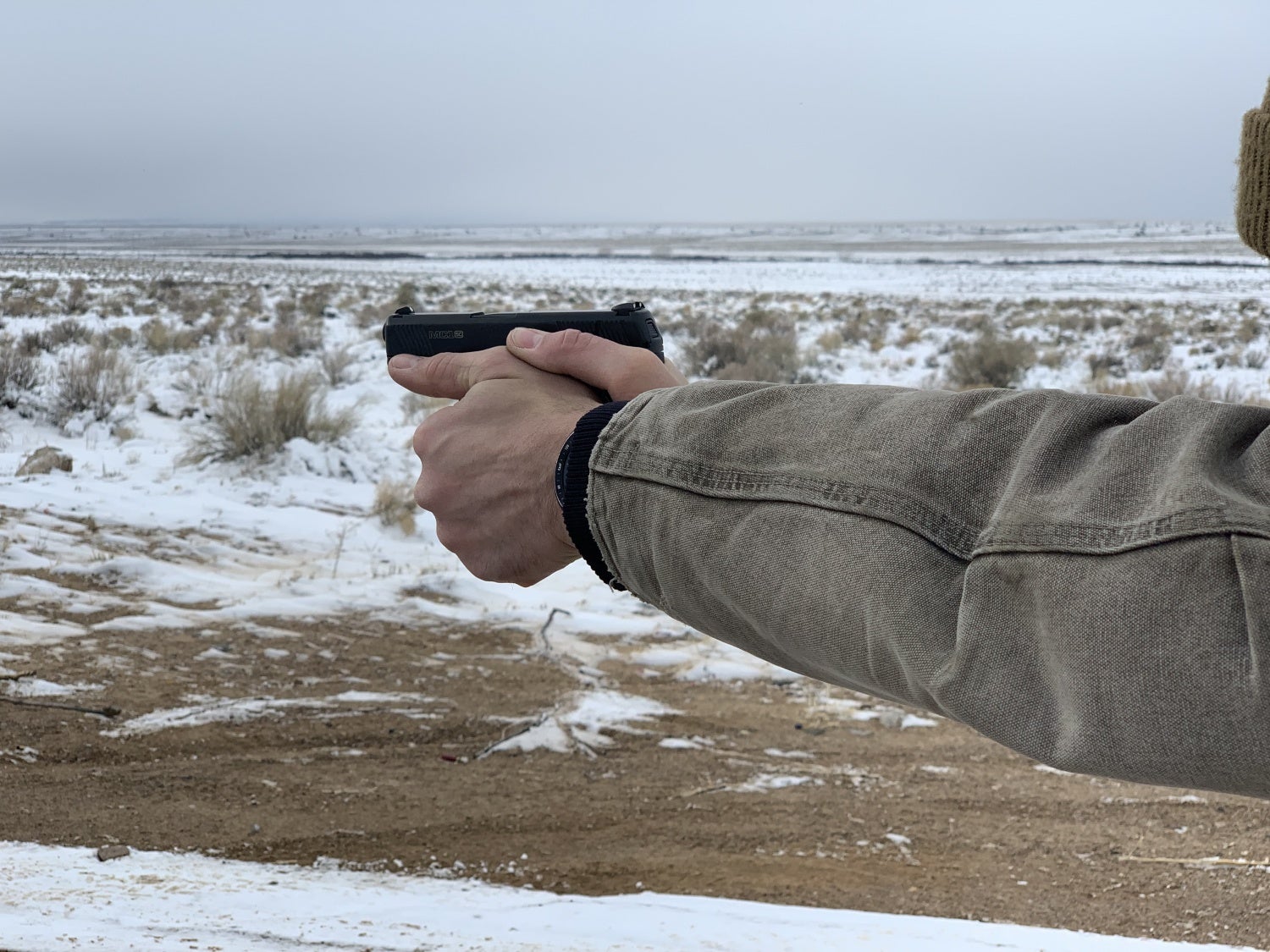
While I own a couple of Shields (and a Glock 43), I really like the fact that I can run Glock mags. I like the fact I can disassemble it without having to pull the trigger. I like that it doesn’t have proprietary sights. I like that the internals are familiar. Ultimately I think the flexibility in the engineering is the tipping point.
Currently, the only custom holsters for the Mossberg MC1 are made by Blackpoint Tactical www.blackpointtactical.com. I’m sure more accessories will hit the market as this pistol gains traction in the market.
This is a risky move for Mossberg, to move out of their comfort zone with shotguns. I think they did a helluva job and I’m interested to see where they take this and what lines they will do in the future.
If you get a chance to try one out, give it a shot. Compare it to the Glock 43 and the M&P Shield. Let us know what you think in the comments. You can find more information at Mossberg’s site.
 Your Privacy Choices
Your Privacy Choices
